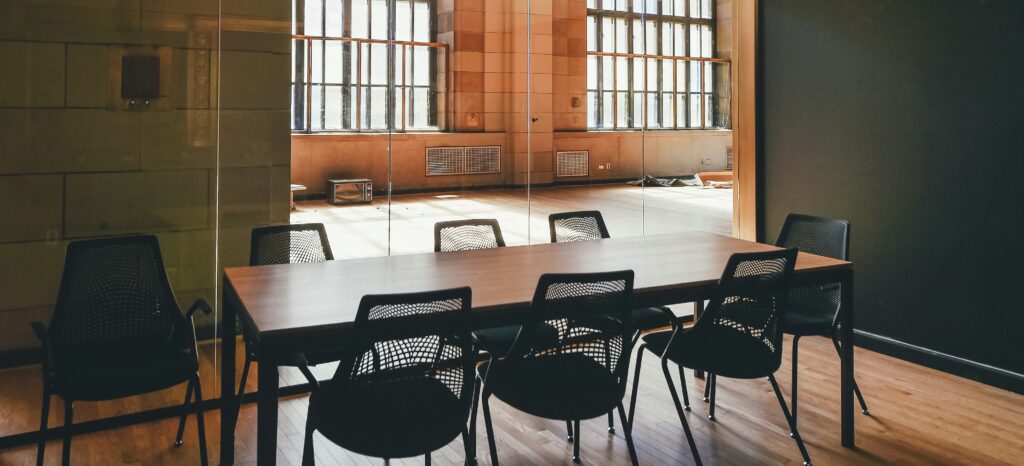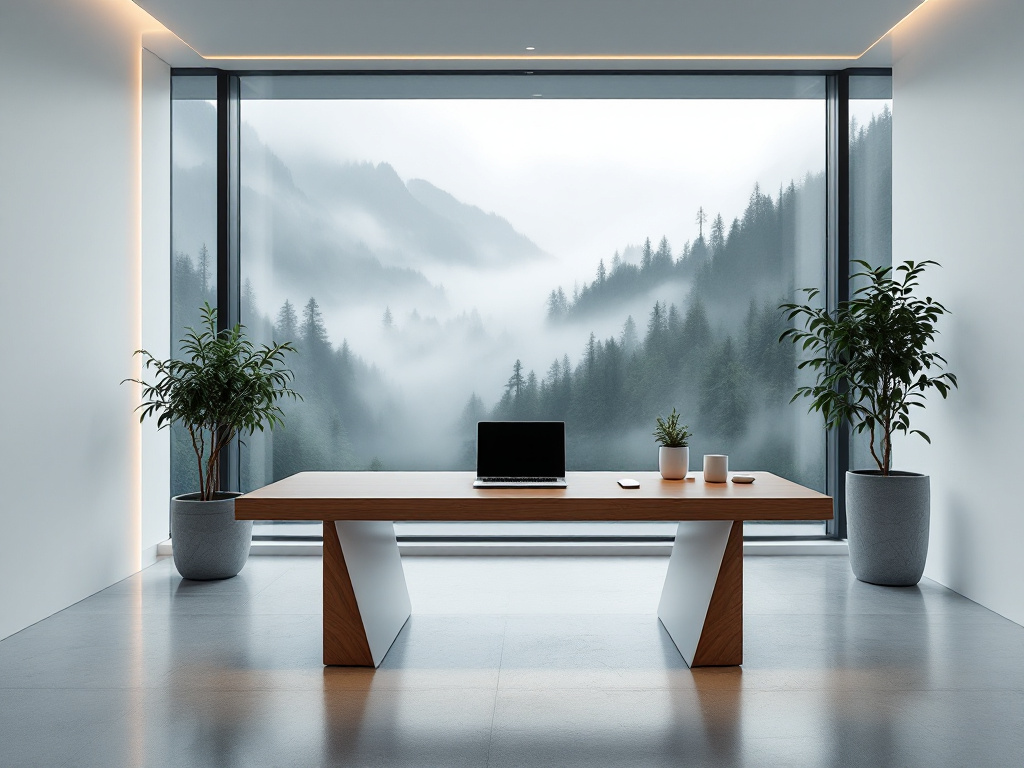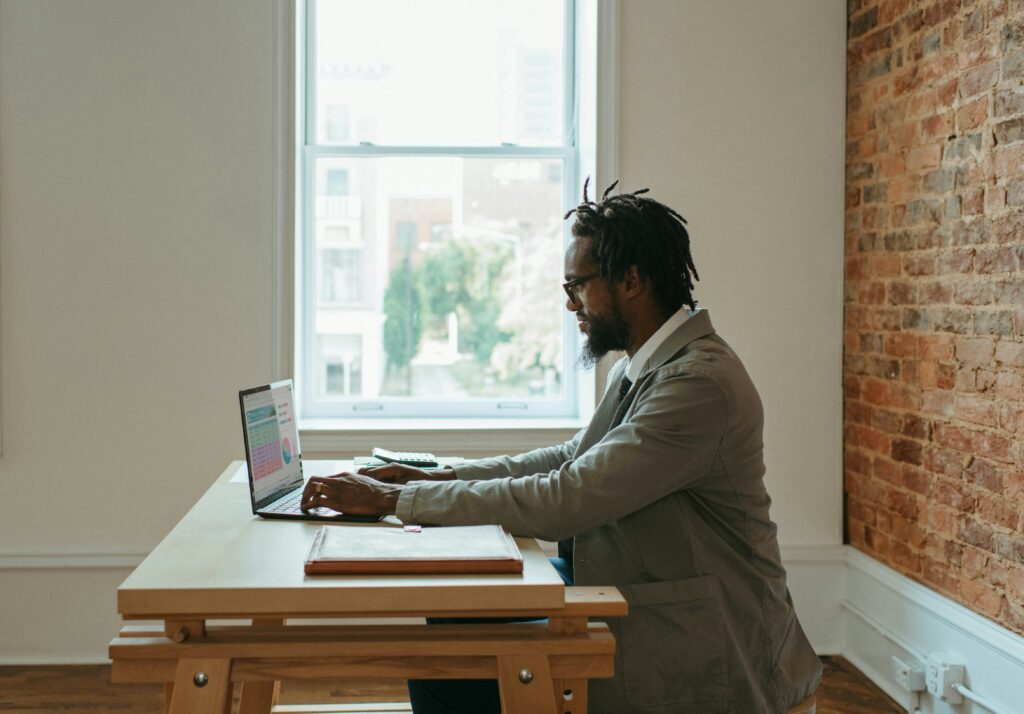Ah, the ‘dream’ of remote work—until your dog serenades your Zoom meeting, your kids stage a snack raid, or TikTok traps you in a scroll-hole again. Raise your hand if this hits home. 🙋♀️
Creating a distraction-free home office isn’t just about finding a quiet corner—it’s about designing a space that fuels focus, creativity, and productivity. Whether you’re a remote work veteran or new to the game, this guide will walk you through everything you need to know to build a workspace that works for you, not against you.

What is a Distraction-Free Workspace?
A distraction-free workspace is more than a desk and a chair. It’s a dedicated zone designed to minimize interruptions and maximize productivity. Think of it as your personal productivity sanctuary—a place where your brain knows it’s time to work, not binge-watch Netflix.
According to a Stanford University study, remote workers are 13% more productive when they have a designated workspace. Why? Because a well-organized environment signals to your brain, “Hey, it’s go-time.” But here’s the catch: a cluttered desk, poor lighting, or a noisy background can sabotage your focus faster than you can say “deadline.”
A true distraction-free space includes three key elements:
- Physical separation from household chaos.
- Minimal visual and auditory distractions (goodbye, pile of laundry next to your desk).
- Ergonomic and tech-friendly setup to keep you comfortable and connected.
How to Build a Distraction-Free Environment
You don’t need a Pinterest-worthy office to boost productivity. With a few strategic tweaks, you can turn even a tiny corner into a productivity powerhouse. Let’s break it down:
1. Choose the Right Location
Your workspace should be in a quiet, low-traffic area. No spare room? No problem! A corner of your bedroom or living room can work—just avoid high-traffic zones like the kitchen.
Pro tip: Use room dividers, curtains, or even a large plant to create a visual boundary between work and relaxation areas.
2. Invest in Ergonomic Essentials
Your chair and desk are the foundation of your setup. An ergonomic chair supports your posture, reducing back pain and fatigue. Pair it with a desk at elbow height, and add a laptop stand to avoid neck strain.
3. Declutter Like a Pro
Clutter isn’t just messy—it’s mentally draining. A Princeton University study found that visual clutter reduces your ability to focus. Keep only essentials on your desk: laptop, notebook, and a coffee mug (priorities, right?).
4. Light It Up
Natural light is your best friend. It boosts mood and energy, according to the National Sleep Foundation. If natural light is scarce, opt for warm, adjustable LED lamps to reduce eye strain.
5. Silence the Noise
Background noise can slash productivity by 40%, per research by UC Irvine. Fix this with noise-canceling headphones or a white noise machine. Apps like Krisp.ai can also mute background chatter during calls.
6. Tech-Proof Your Setup
A shaky Wi-Fi connection or dying laptop can derail your flow. Invest in a reliable router, surge protector, and backup battery. Tools like Trello or Desktime can help track tasks and minimize digital distractions.
What More Can Be Done to Provide Access to a Distraction-Free Work Environment?
Building the space is half the battle—maintaining focus requires smart habits. Here’s how to level up:
Habit 1: Dress for Success
Swap pajamas for “work clothes” to trick your brain into productivity mode. As Indeed.com notes, dressing professionally sharpens your mindset and prepares you for impromptu video calls.
Habit 2: Time-Block Like a CEO
Schedule your day in 90-minute chunks (aka “focus sprints”) followed by 15-minute breaks. Apps like Google Calendar or Focus@Will can help.
Habit 3: Embrace the Power of “No”
Turn off non-urgent notifications and set boundaries with housemates. A “Do Not Disturb” sign works wonders during deep work sessions.
Habit 4: Fuel Your Brain
Snack on nuts, fruits, and dark chocolate instead of sugary treats. Staying hydrated is key too—research shows even mild dehydration can zap concentration.
Habit 5: Move Your Body
Take a 5-minute stretch break every hour. Apps like Stand Up! remind you to step away from your desk.
What is the Biggest Time Waster at Work?
Drumroll, please… multitasking. Trying to juggle emails, Slack, and a report at once? You’re not saving time—you’re slashing efficiency by 40%. Other culprits include:
| Time Waster | Impact on Productivity | Quick Fix |
|---|---|---|
| Social Media Scrolling | Loses 2+ hours daily | Use blockers like Freedom |
| Unnecessary Meetings | Wastes 31% of the workday | Advocate for async updates via Slack |
| Cluttered Workspace | Adds 20% more task time | Declutter daily for 5 minutes |
| Poor Email Management | Checks email 15x/day | Batch-process emails twice daily |
Wrapping It Up
Creating a distraction-free home office isn’t about perfection—it’s about intentionality. Start small: declutter your desk, invest in a comfy chair, and silence notifications. Pair your space with habits like time-blocking and dressing for work, and you’ll transform your home into a productivity haven.
Remember, the goal isn’t to eliminate all distractions (let’s be real—your dog will still bark). It’s to design a space and routine that helps you bounce back faster. Now, go conquer that to-do list!
Got a favorite productivity hack or tool? Share it in the comments below! 😊
Looking to dive deeper into remote work productivity? Check out our comprehensive guide covering everything from time management techniques to virtual collaboration tools.
[This article is part of our “Remote Work Productivity: A Comprehensive Guide for Beginners” series. Explore more topics to master your remote work journey.]
What strategies have you found most effective in creating your distraction-free home office? Share your experiences


